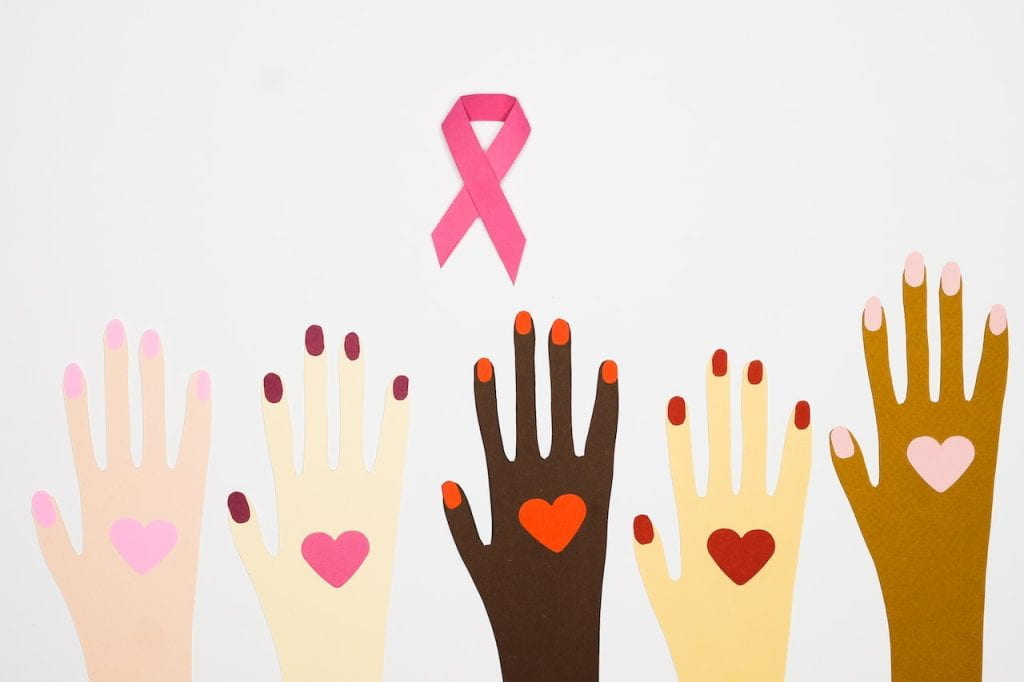
October is Breast Cancer Awareness Month, a time when we show support for breast cancer patients and raise awareness of the disease and the importance of early detection. 1 in 8 women will receive a breast cancer diagnosis sometime in their lifetime. Though tremendous progress has been made in early detection and treatment since the 1980s, 43,000 women still die annually of breast cancer and there are significant disparities in who is more likely to survive.
“In the United States, age-adjusted breast-cancer mortality is about 40% higher among Black women than among non-Hispanic White women (27.7 vs. 20.0 deaths per 100,000 women from 2014 through 2018), despite a lower incidence among Black women (125.8 vs. 139.2 cases per 100,000 women)” according to a recently published Perspective article in the New England Journal of Medicine.1 The article asserts that Black women have benefited less from mammography than White women and that social determinants of health play a role. The higher incidence of hormone receptor (HR) negative cancer subtypes, including triple-negative, in Black women is another factor in survival disparity. These tumors are harder to detect by mammography, more aggressive, and not responsive to hormone therapy, making for a poorer prognosis than the more common HR positive subtypes. The NEJM article calls for making prevention and treatment of triple-negative breast cancer a national priority.
Recently there has been a campaign for alternate methods of early cancer detection for women with dense breasts. Dense breasts can make a mammogram more difficult to read. 38 states now require notification of women who have had a mammogram that indicated high tissue density. 16 states and the District of Columbia now also have expanded insurance coverage for these women, usually allowing an annual mammogram and 3D mammography, MRI, or ultrasound screening. However, most organizations in the US that author breast cancer screening guidelines do not recommend supplemental imaging for women with dense breasts. The National Cancer Institute (NCI) has an FAQ on dense breast tissue, breast cancer risk and screening.
Genetic testing for BRCA gene mutations also has the potential to reduce breast cancer incidence and mortality. 55%–72% of women who inherit a harmful BRCA1 variant and 45%–69% of women who inherit a harmful BRCA2 variant will develop breast cancer by 70–80 years of age.2 Testing is not recommended for the general public. Only those with increased risk for a BRCA mutation should pursue genetic counseling and potential testing. The NCI has a guide on BRCA cancer risk and genetic testing, outlining at-risk populations, benefits and harms of testing, and treatment options for those who have the mutations.
- Jatoi I, Sung H, Jemal A. The Emergence of the Racial Disparity in U.S. Breast-Cancer Mortality. N Engl J Med. 2022 Jun 23;386(25):2349-2352. doi: 10.1056/NEJMp2200244. Epub 2022 Jun 18. PMID: 35713541.
- Kuchenbaecker KB, Hopper JL, Barnes DR, et al. Risks of Breast, Ovarian, and Contralateral Breast Cancer for BRCA1 and BRCA2 Mutation Carriers. JAMA. 2017 Jun 20;317(23):2402-2416. doi: 10.1001/jama.2017.7112. PMID: 28632866.


